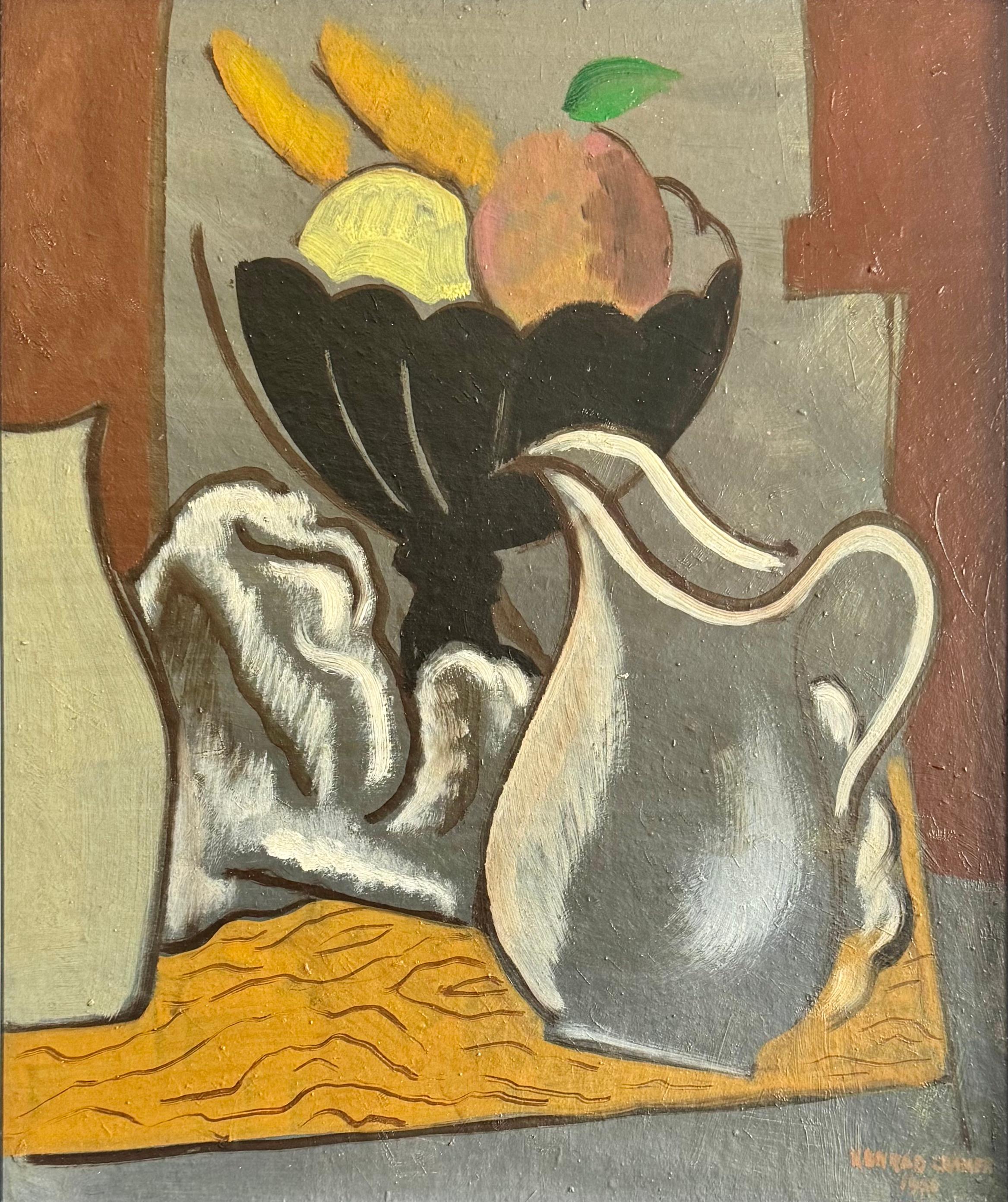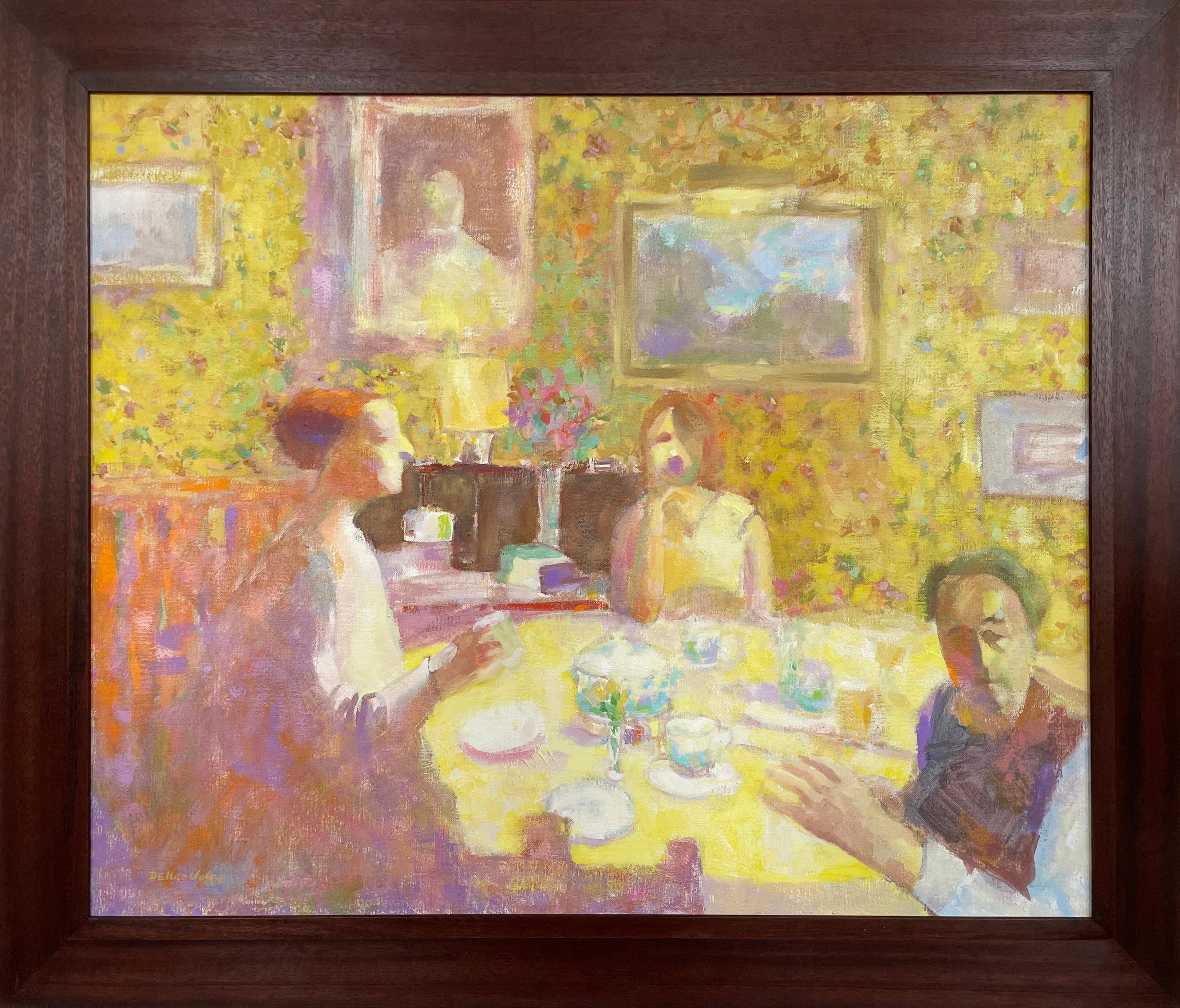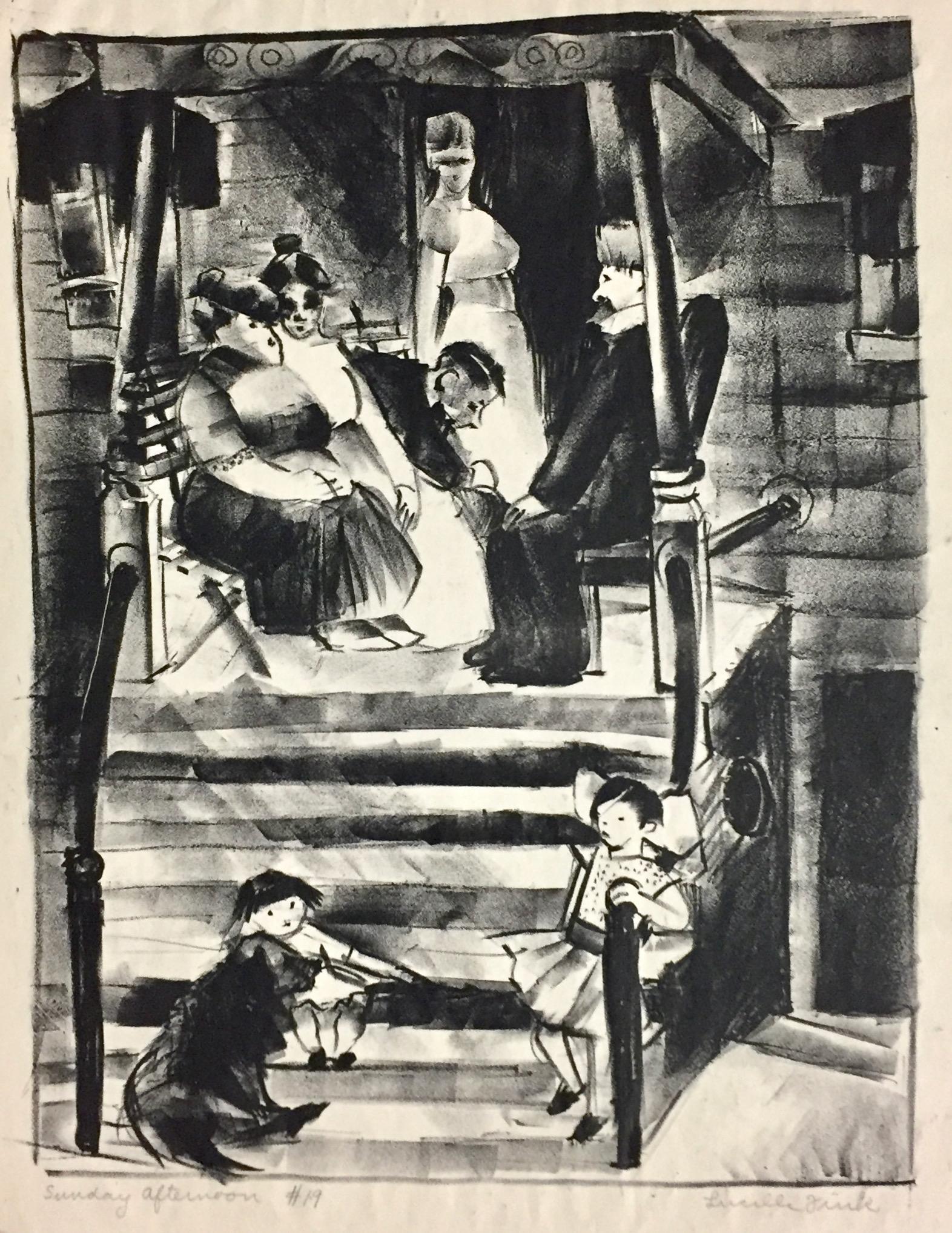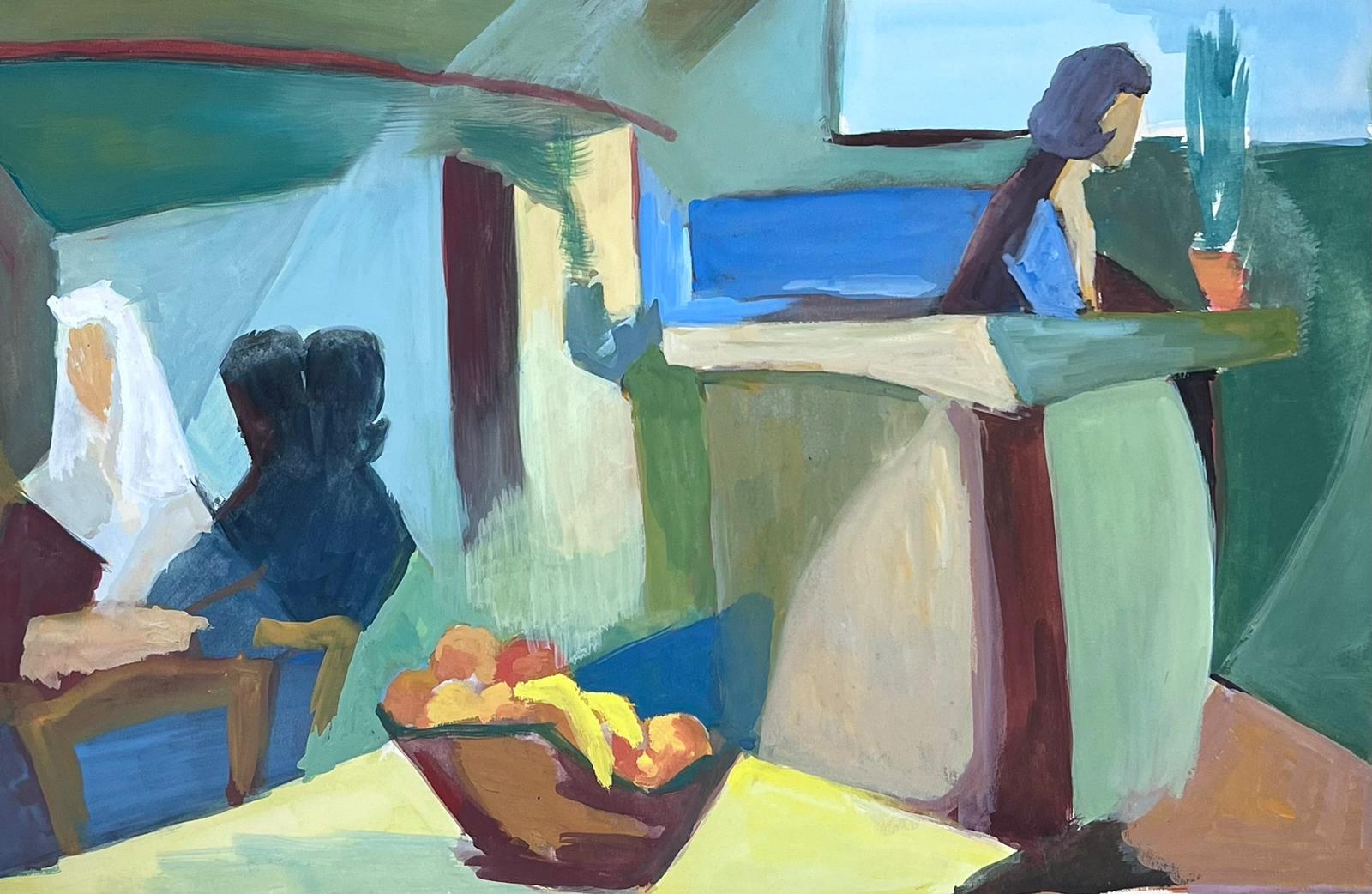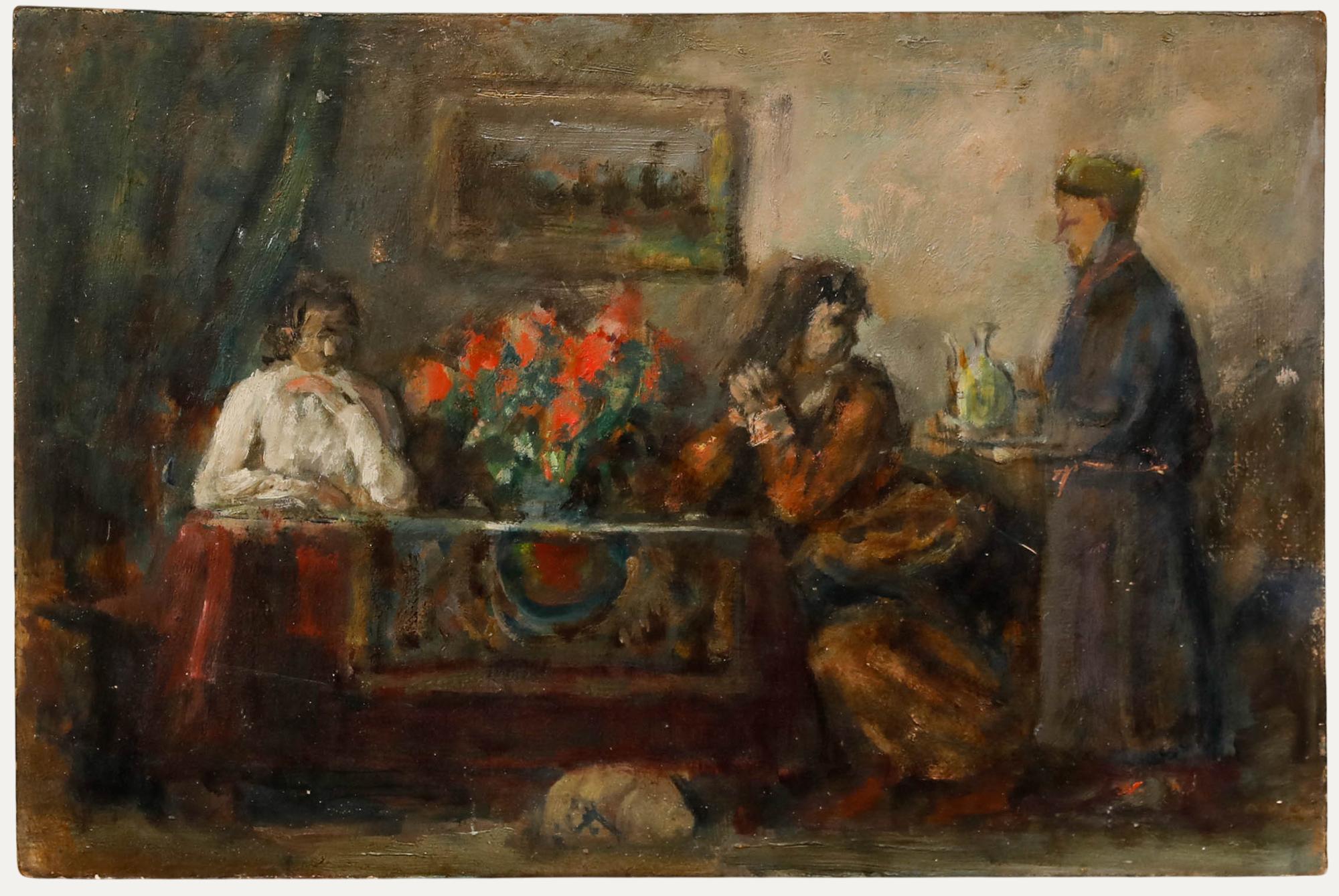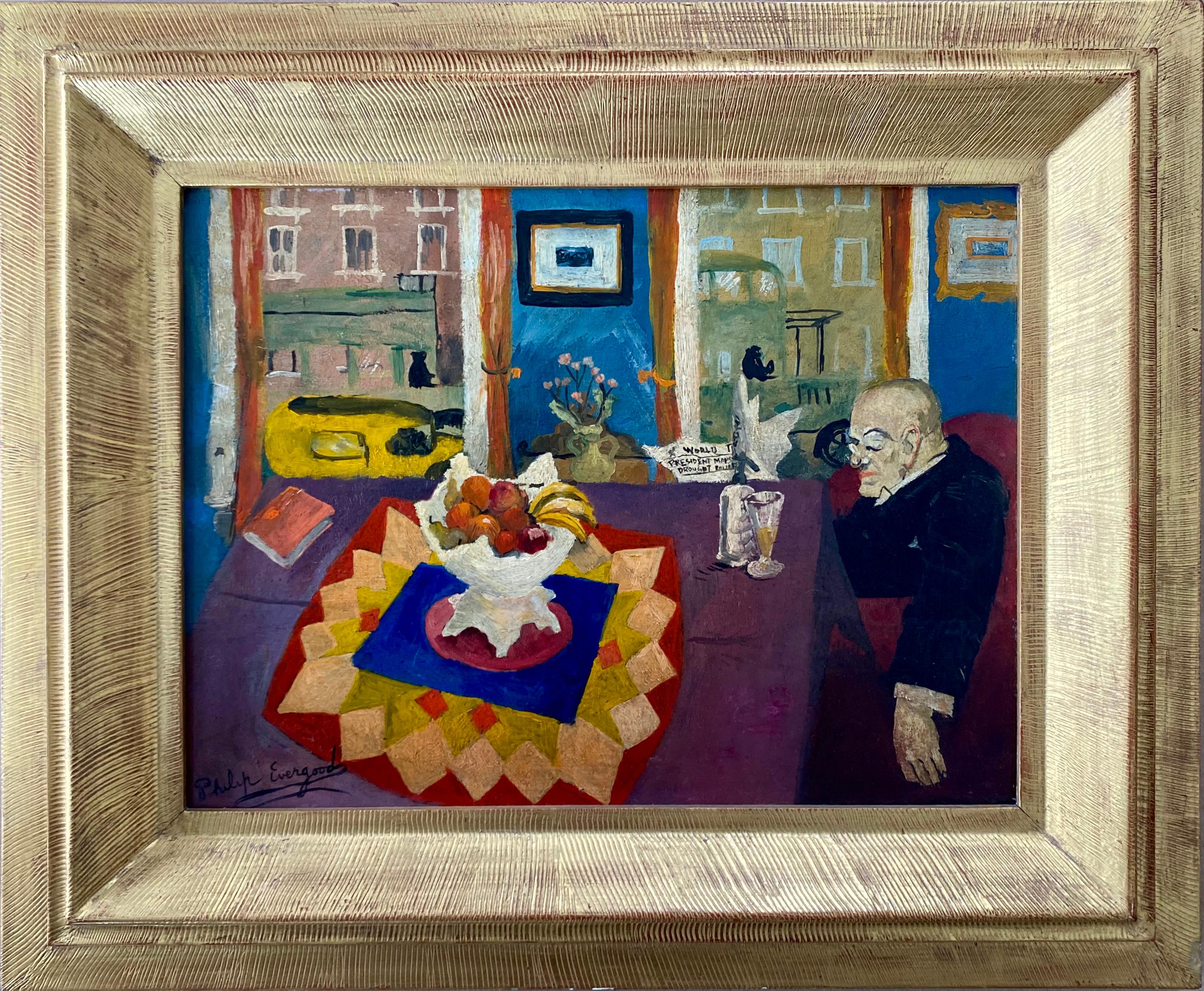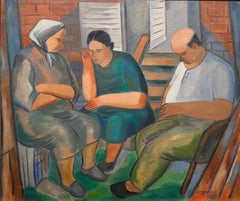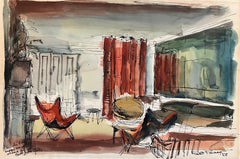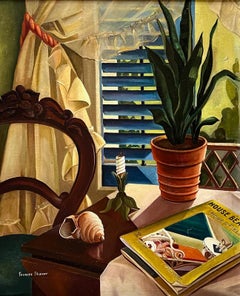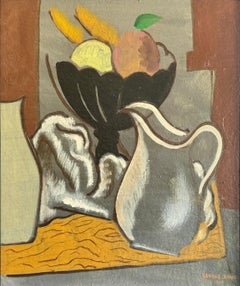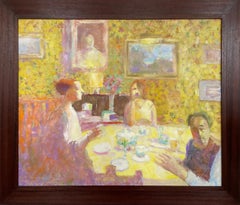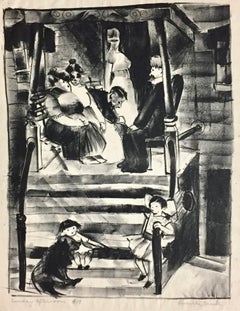Items Similar to Refreshment and Intermission
Want more images or videos?
Request additional images or videos from the seller
1 of 6
REGINALD GROOMSRefreshment and Intermissionc. 1930s/40s
c. 1930s/40s
$3,750
£2,909.97
€3,285.54
CA$5,365.90
A$5,855.18
CHF 3,029.28
MX$70,045.50
NOK 38,267.08
SEK 35,932.19
DKK 24,537.18
About the Item
This painting is part of our exhibition America Coast to Coast: Artists of the 1930s
Refreshment and Intermission, tempera on board, 11 x 19 inches, c. 1930/40s, signed lower middle, exhibited at Groom's one person show at Closson’s Gallery, Cincinnati, OH, March, 1943 (see The Cincinnati Enquirer, March 7, 1943, section 3, p. 4); provenance includes a private Ohio collection; presented in a period gold painted frame
About the Painting
Refreshment and Intermission is part of a series of paintings of Amish subjects Grooms started in 1938 based on his travels in Pennsylvania. These tempera works reflect the Regionalist impulse to paint local scenes far away from big cities. Focusing on both people and landscape, Grooms' compositions tell the stories of the uniquely American experience of the Amish. “Grooms paints the Amish people with as much understanding of type and appreciation of the plastic quality as any artist who has approached this challenging subject," noted the art critic for The Cincinnati Inquirer when reviewing Grooms' solo exhibition at Closson' Gallery, "In his current show, ‘Refreshment and Intermission,’ is a case in point. Here the absorbed concentration of people eating is described without an ounce of sentimentality. He has made the most of the interest between groups and of the conversations, both humorous and serious. The work has the quaint simplicity of a Lord’s Supper without the religious element.” Refreshment and Intermission is related to other Amish works Grooms exhibited during the Great Depression, including The Bridegroom Toss (New York Worlds Fair), The Amish Man (Cincinnati Art Museum), and After Amish Meeting (Cincinnati Art Museum and The Golden Gate International Exhibition (San Francisco)). Reflecting on the Grooms' Amish pictures, a critic wrote, "To see Mr. Grooms' canvases of these Amish people and their farmland is to have a real experience."
About the Artist
Reginald Grooms was an Ohio painter, teacher and lithographer, best known for his American Scene and Regionalist works of the 1930s and 1940s. Born, in Cincinnati, Grooms attended his hometown Art Academy from 1917 through 1923 before moving to Paris where he attended the Académie Julian until 1925 and participated in the Paris Salon. He was an active member of Cincinnati Art Club (President 1933-35), the Cincinnati MacDowell Society (President 1941 - 43), the Scarab Club and the Ohio Watercolor Society. Grooms exhibited nationally at the Cincinnati Art Museum, the Pennsylvania Academy of Fine Arts, the Art Institute of Chicago, the Kearney Gallery (Milwaukee), the New York World's Fair and the Golden Gate International Exposition in San Francisco. He was a skilled teacher, serving at the Cincinnati Art Academy and the University of Cincinnati. He is listed in Who Was Who in American Art and all other standard references.
- Creator:REGINALD GROOMS
- Creation Year:c. 1930s/40s
- Dimensions:Height: 11 in (27.94 cm)Width: 19 in (48.26 cm)Depth: 2 in (5.08 cm)
- More Editions & Sizes:11 x 19Price: $3,750
- Medium:
- Movement & Style:
- Period:
- Condition:
- Gallery Location:Los Angeles, CA
- Reference Number:1stDibs: LU1859213055562
About the Seller
5.0
Gold Seller
Premium sellers maintaining a 4.3+ rating and 24-hour response times
1stDibs seller since 2022
17 sales on 1stDibs
- ShippingRetrieving quote...Shipping from: Los Angeles, CA
- Return Policy
More From This Seller
View AllNeighbors
By Norman Barr
Located in Los Angeles, CA
Neighbors, 1939, oil on canvas, signed and dated lower right, 22 x 26 inches
Norman Barr was an American Scene painter and muralist known for his poignant depictions of working-clas...
Category
1930s American Modern Figurative Paintings
Materials
Canvas, Oil
The Show is On
Located in Los Angeles, CA
The Show is On, 1940, oil on canvas, signed and dated lower right, 24 x 20 inches, exhibited: 30th Annual Exhibition of the Associated Artists of Pittsburgh, Carnegie Institute, Pitt...
Category
1940s American Modern Figurative Paintings
Materials
Canvas, Oil
Interior (Untitled)
By Robert Freiman
Located in Los Angeles, CA
nterior (Untitled), 1958, watercolor and ink on paper mounted on cardboard, signed and dated lower right, 11 ½ x 16 ½ inches (sight); 12 x 18 inches (sheet); inscribed lower left “To...
Category
1950s American Modern Interior Drawings and Watercolors
Materials
Paper, Watercolor
Still Life (Untitled)
Located in Los Angeles, CA
Still Life (Untitled), c. 1935 – 1940, oil on canvas, signed lower left, magazine cover has a 1934 date, 32 x 26 inches, remnant of exhibition label verso
In their essay for the gro...
Category
1930s American Modern Still-life Paintings
Materials
Canvas, Oil
What a Life
Located in Los Angeles, CA
What a Life, c. 1930, mixed media on board, 18 x 24 inches, signed lower left; titled on label; exhibited at The San Francisco Art Association Fifty-Second Annual Exhibition at the P...
Category
1920s American Modern Figurative Paintings
Materials
Mixed Media
Indolent Interlude
Located in Los Angeles, CA
Indolent Interlude, 1936, oil on board, signed and dated lower middle, 12 x 16 inches, signed verso and inscribed with title and date, exhibited Uncommissioned Portrait Exhibition, A...
Category
1930s American Modern Figurative Paintings
Materials
Board, Oil
You May Also Like
Still Life American Scene Social Realism 20th Century Woodstock Modern Dudensing
By Konrad Cramer
Located in New York, NY
Still Life American Scene Social Realism 20th Century Woodstock Modern Dudensing
Konrad Cramer (1888 – 1963)
"Black Glass Bowl and Napkin"
16 ½ x 14 inches
Oil on Board
Singed lower...
Category
1920s American Realist Still-life Paintings
Materials
Oil, Board
Dinner Time Figurative Abstract
By Ralph Eugene Della-Volpe
Located in New York, NY
This interesting and fabulous color palette work is classic Della-Volpe. Known as a "Colorist" and for his figurative works that convey just the right amount of information! Often ...
Category
1990s Abstract Paintings
Materials
Canvas, Oil
Sunday Afternoon
By Lucille Fink
Located in New York, NY
Lucille Fink creates slightly bizarre, densely drawn spaces. Signed, titled, and numbered '19,' in pencil. Annotated on the reverse, "June, 1932, week of 6-10-32, last wk of school."...
Category
Early 20th Century American Modern Figurative Prints
Materials
Lithograph
20th Century French Cubist Modernist Interior Cafe Scene with Figures
Located in Cirencester, Gloucestershire
The Cafe Interior
by Guy Nicod
(French 1923 - 2021)
gouache on artist paper, unframed
painting : 20 x 26 inches
provenance: artists estate, France
condition: very good and sound cond...
Category
Mid-20th Century Modern Figurative Paintings
Materials
Gouache
$938 Sale Price
30% Off
George Weissbort (1928-2013) - 20th Century Oil, Serving Drinks
By George Weissbort
Located in Corsham, GB
Interior scene with figures, oil on board. Unsigned. (Provenance: Studio Sale, George Weissbort).
Category
20th Century Interior Paintings
Materials
Oil
Philip Evergood American Modernism WPA Social Realism Modern Still Life Interior
By Philip Evergood
Located in New York, NY
Interior with Man at Table American Modernism WPA Social Realism Modern Painting
Philip Evergood (1901 - 1973) Untitled (Interior with Man at ...
Category
1930s American Modern Figurative Paintings
Materials
Oil, Panel
More Ways To Browse
Amish Painting
Cafe Scene Painting
Charlie Chaplin Vintage
Blue Face Painting
Isaac Pelayo
Kibbutz Art
New Yorker Cover
Opera Singer
Picasso Oil Painting
Shaw London
Vintage Circus Performers
Dior 1955
Golden Age Of Illustration
Jazz Oil Painting
Old Master Christ
Shadow Puppets
Social Realism Social Realism Art 1930s And 1940s
Trucks Painting
